This is the one thing I use to cook the perfect rice
Not all rice cookers are created equal.
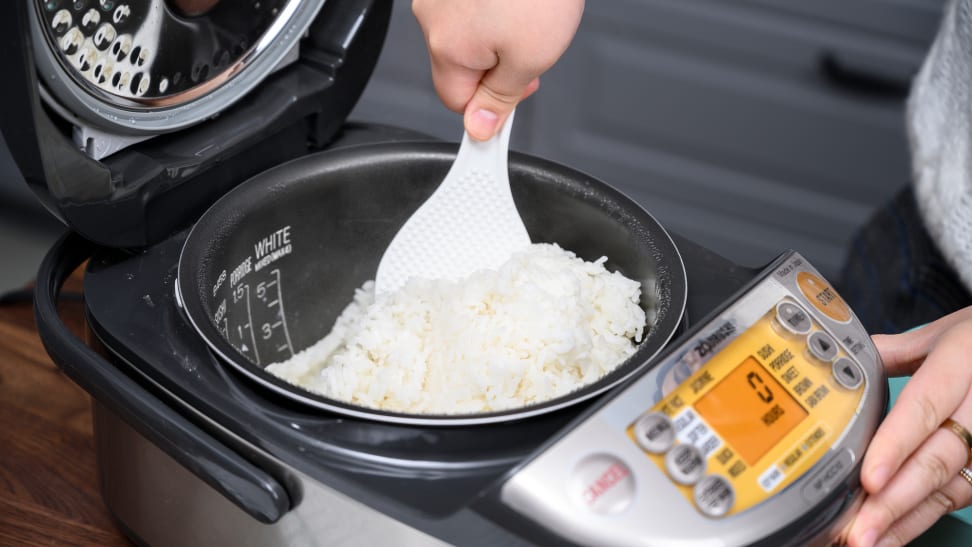 Credit:
Reviewed / Jackson Ruckar
Credit:
Reviewed / Jackson Ruckar
Recommendations are independently chosen by Reviewed's editors. Purchases made through the links below may earn us and our publishing partners a commission. Prices were accurate at the time this article was published but may change over time.
If I had to be a snob about just one thing, I would gladly choose rice. Like Bon Appétit’s Brad Leone, I can’t live without a rice cooker. The day my old Panasonic kicked the bucket, I quickly spiraled into madness, clueless as to how to make rice without one.
I loved my old Pansonic One-Touch Fuzzy Logic, which, coincidentally, came out on top when we first tested rice cookers. In its defense, this rice cooker had cooked exceptionally fluffy rice and steamed delicious vegetables and baos for eight years. It did the job, but it wasn’t without flaws, and I was ready to try something new.
As I started looking for a replacement, I narrowed down a list of features that I definitely wanted in my next rice cooker: quality, versatility, and durability. After consulting my parents, they enthusiastically recommended this induction Zojirushi NP-HCC18XH, and I decided to give it a try.
What is an induction rice cooker?
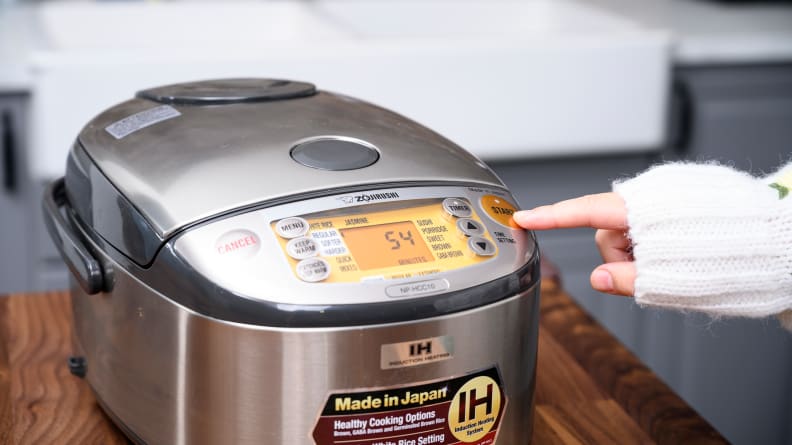
After my old rice cooker died, I decided to invest in an induction rice cooker.
If you’ve been shopping around for a rice cooker, you may have encountered the “IH” (induction cooking) label. This label indicates that the cooker's equipped with induction technology, which heats the interior pan using a magnetic field. Unlike electric rice cookers that heat solely from the bottom coil, induction rice cookers like this Zojirushi convert the entire inner pan into a heat source, which guarantees evenly cooked rice.
Because of their advanced technology, induction rice cookers cost much more than traditional electric ones—I paid $273 for this Zojirushi, while my fiancé only paid $70 for our old Panasonic. However, the quality of the rice I've cooked with induction has convinced me it's worth the price.
How does the Zojirushi rice cooker look and feel?
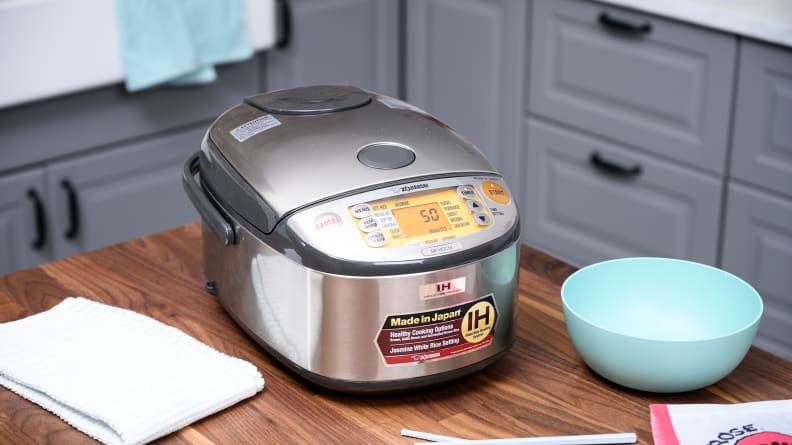
This rice cooker is sleek and compact.
The silver, oblong Zojirushi rice cooker comes with a thick spherical inner pan with nonstick coating, a rice paddle for scooping, and a cup for measuring uncooked rice.
This model also comes with a rice scoop holder that can be snugly attached to the side of the rice cooker. I'm also a fan of the calibrated water lines on the interior of the pan. They correspond with the rice cup and tell you exactly how much water is required to cook every type of rice, including brown rice, quinoa, and jasmine rice.
How does it perform?

This Zojirushi cooks the best rice I've ever tasted.
At first, I was curious and skeptical about rice cookers with induction heating elements. However, after anxiously waiting 55 minutes for my first scoop of plain white rice from my new Zojirushi, I was impressed. Not only did it do an excellent job steaming the fluffiest rice, but it magically turned my average quality rice into something lightly umami-flavored.
As someone who loves to entertain, I always like being able to prepare a good selection of rice for my guests. This rice cooker is perfect for entertaining guests because it offers presets that allow me to cook jasmine, basmati, brown rice, porridge, and white rice, all at the press of a button. For plain white rice, I can adjust the texture to be regular, soft, or hard, which is so important to me because I serve different dishes that can pair well with rice of various textures.
For brown rice lovers, the GABA (Gamma-aminobutyric acid) setting helps draw the best nutrients from brown rice, which is known for being a healthier alternative to white rice. It works by soaking brown rice for two hours at 104°F before cooking. As my parents love brown rice and are trying to get me into eating more brown rice, this is one of the key benefits they suggested about this rice cooker.
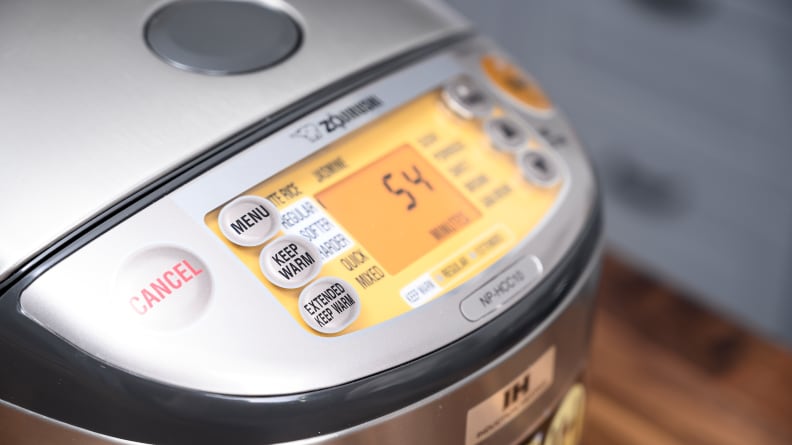
Plan your dinner ahead to avoid waiting on the rice to be done.
The only thing some people don’t like about this rice cooker is how long it takes to work. In our roundup, a similar model, the Zojirushi NL-BAC05SB, was the slowest among all the rice cookers we tested.
For the regular white rice setting on my Zojirushi, it takes about 55 minutes to cook three cups, and even the “quick” setting takes about 30 minutes. This isn’t a problem for me, because I always cook the rice first before I start cooking everything else. But if time is your concern, then other models such as the Panasonic might be a better choice.
A personal bonus: The Zojirushi plays a rendition of “Twinkle, Twinkle, Little Star” as an alert. Like many other Zojirushi rice cookers, it’s programmed to alert you when the device starts and finishes cooking by playing songs. If you’re not a big fan of the melody, you can switch it to beeps or silent mode.
Should you buy this rice cooker?
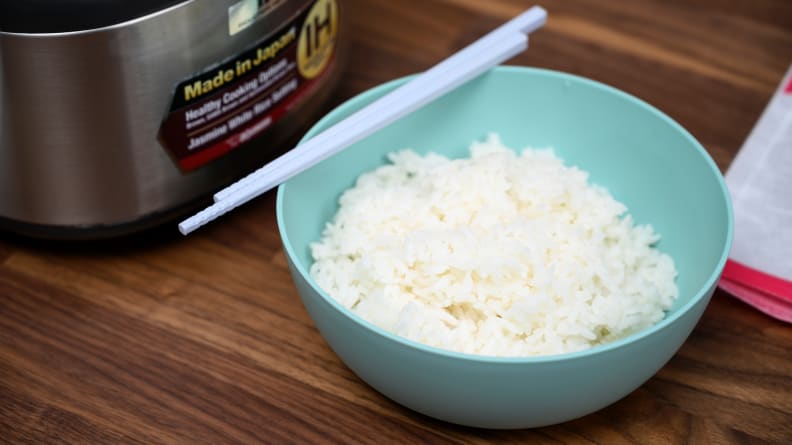
We chose the one liter version, as it takes up less counterspace.
If you’re like me, and you consume rice three times a day almost every day, you’ll definitely benefit from investing in a rice cooker of such high quality. Or, if you have a big family to feed and like to have the option to serve different types of rice and mixed grains, you’ll also greatly appreciate the versatility of the Zojirushi. What sets this model apart, aside from its superb ability to fluff up white rice, is how well it handles other types of rice so well. An upgraded model, the NP-NVC10 ($385), has a setting for crispy rice, which is perfect if you’re in the mood for some tahdig.
When it comes to size, I chose the one liter (5.5 cup) version, which is more than enough for a small family like ours. Between the two of us, we cook three cups of rice two to three times a week and we serve rice with most of our meals. If you’re looking for a rice cooker with a larger capacity, then the 1.8 liters (10 cup) version might be the best choice.
What to know when you shop for rice cookers

Induction is awesome, but some regular electric rice cookers perform well, too.
Although I love my induction rice cooker, they're not for everyone. If you're shopping on a budget, then there are plenty of good electric rice cookers to choose from. Pick wisely, because the electric coil is why a cheap rice cooker can overcook the bottom of the pan and undercook the top. If you move from the cheapest rice cookers to the mid-range ones like my old Panasonic, you’ll want to look into smart rice cookers with "fuzzy logic." These rice cookers prevent over- and under-cooking to an extent, but may still occasionally lightly brown the bottom of the rice.
Another smart feature to look for is “micom,” or micro-computerized. Found in all Zojirushi cookers, micom allows the device to detect temperature changes and human errors. It then automatically adjusts its settings to make sure the rice comes out nearly perfect, almost like a personal assistant.
Remember that rice cookers can cook more than plain white rice. They can prepare a range of grains, as well as pancakes, oatmeal, and even bread. Considering their versatility and simplicity, they might just be my favorite kitchen gadget ever.



